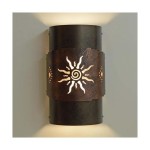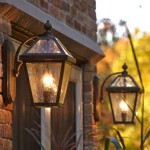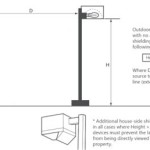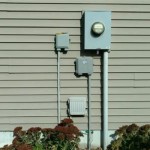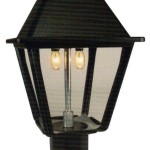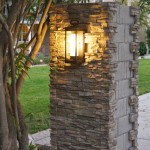Are There Specific Outdoor Light Bulbs?
The illumination of outdoor spaces extends beyond mere aesthetics; it plays a critical role in safety, security, and overall ambiance. Selecting the appropriate outdoor light bulbs involves considering a range of factors, including weather resistance, energy efficiency, light output, and the specific purpose of the lighting. This article explores the various types of outdoor light bulbs available and the key considerations necessary for making informed choices.
Understanding the Importance of Weather Resistance
Outdoor light bulbs are subjected to a variety of environmental conditions, including rain, snow, extreme temperatures, and humidity. Standard indoor light bulbs are not designed to withstand these elements and are prone to failure or even shattering when exposed to them. Therefore, selecting bulbs specifically designed for outdoor use is paramount.
Weather-resistant bulbs are typically constructed with materials and designs that offer protection against moisture and temperature fluctuations. These bulbs often feature a robust outer casing, sealed components, and specialized coatings that prevent water damage and corrosion. The Ingress Protection (IP) rating system provides a standardized measure of a bulb's resistance to dust and water. For outdoor applications, bulbs with an IP rating of IP44 or higher are generally recommended. This rating indicates protection against splashing water from any direction.
Furthermore, the operating temperature range of the bulb is a crucial consideration, particularly in regions with extreme climates. Bulbs should be selected that are designed to function effectively within the local temperature extremes, ensuring consistent performance and longevity.
Exploring Different Types of Outdoor Light Bulbs
A diverse range of bulb types are available for outdoor lighting, each offering distinct characteristics in terms of energy efficiency, light output, lifespan, and color temperature. Understanding these differences is essential for selecting the most appropriate bulb for a specific application.
Incandescent Bulbs: Traditional incandescent bulbs are relatively inexpensive but are also the least energy-efficient option. They produce light by heating a filament until it glows, a process that generates a significant amount of heat as a byproduct. This heat represents wasted energy, resulting in higher electricity bills. Incandescent bulbs also have a relatively short lifespan compared to other types of bulbs.
Halogen Bulbs: Halogen bulbs are an improvement over incandescent bulbs in terms of energy efficiency and lifespan. They contain a halogen gas that allows the filament to burn brighter and last longer. However, they still consume significantly more energy than more modern alternatives and produce considerable heat.
Compact Fluorescent Lamps (CFLs): CFLs are more energy-efficient than incandescent and halogen bulbs, typically consuming about 75% less energy. They produce light by passing an electric current through a gas-filled tube, causing it to fluoresce. CFLs have a longer lifespan than incandescent bulbs, but they contain mercury, which requires special disposal procedures. They can also be sensitive to cold temperatures, potentially affecting their performance in outdoor applications.
Light Emitting Diodes (LEDs): LEDs are the most energy-efficient and longest-lasting type of light bulb currently available. They produce light by passing an electric current through a semiconductor material. LEDs consume significantly less energy than other types of bulbs and have a lifespan that can be 25 times longer than incandescent bulbs. They are also highly durable and resistant to temperature fluctuations, making them an excellent choice for outdoor applications. LEDs are available in a wide range of color temperatures, allowing for precise control over the ambiance of the outdoor space.
Solar-Powered Lights: These are a unique category utilizing photovoltaic cells to convert sunlight into electricity, stored in batteries. They are ideal for accent lighting and areas where running electrical wiring is difficult or costly. They are environmentally friendly but their brightness and longevity are dependent on sunlight availability and battery quality.
Key Considerations for Selecting Outdoor Light Bulbs
Beyond the type of bulb, several other factors should be taken into account when selecting outdoor light bulbs to ensure optimal performance and satisfaction. These factors include light output, color temperature, beam angle, and the specific requirements of the fixture.
Light Output (Lumens): Light output is measured in lumens, which indicates the total amount of light emitted by the bulb. The appropriate lumen output will depend on the specific application. For general area lighting, such as illuminating a patio or deck, higher lumen outputs are typically desired. For accent lighting, such as highlighting a garden feature or pathway, lower lumen outputs may be sufficient.
Color Temperature (Kelvin): Color temperature is measured in Kelvin (K) and describes the warmth or coolness of the light. Lower Kelvin values (e.g., 2700K-3000K) produce a warm, yellowish light, which is often preferred for creating a cozy and inviting atmosphere. Higher Kelvin values (e.g., 4000K-5000K) produce a cool, bluish-white light, which is often used for security lighting or task lighting. Selecting the appropriate color temperature depends on the desired ambiance and the specific purpose of the lighting.
Beam Angle: The beam angle refers to the spread of light emitted by the bulb. Narrow beam angles are ideal for spotlighting specific objects or areas, while wider beam angles are better suited for general area lighting. The choice of beam angle will depend on the desired effect and the specific requirements of the application.
Fixture Compatibility: It is crucial to ensure that the selected bulbs are compatible with the existing outdoor lighting fixtures. This includes verifying the base type (e.g., E26, E12), wattage rating, and any other specific requirements of the fixture. Using incompatible bulbs can damage the fixture or pose a safety hazard.
Dimmability: If dimming capabilities are desired, be sure to select bulbs that are specifically designed to be dimmable. Not all bulbs are dimmable, and using a non-dimmable bulb with a dimmer switch can damage the bulb or the dimmer switch.
Smart Lighting Features: Modern outdoor lighting can take advantage of smart technologies. This includes bulbs that can be controlled remotely via smartphones or voice assistants, those that can be programmed with timers and schedules, and those with motion sensors for added security. Integrating smart features enhances convenience and allows for greater control over outdoor lighting.
Specific Use Case: The requirements for lighting a pathway are different from those for lighting a porch or security lighting. Pathway lights require low-lumen spread light to guide foot traffic, while porch lights need to be bright to illuminate the entryway. Security lights often require a high lumen output and motion sensor capabilities to deter intruders.
Aesthetic Considerations: While functionality is paramount, aesthetics also play a crucial role. The style and design of the bulb should complement the overall aesthetic of the outdoor space. Traditional-style bulbs can enhance the charm of a vintage-inspired garden, while sleek, modern bulbs can complement a contemporary patio.
Certifications and Standards: Look for bulbs that meet relevant industry certifications and standards, such as UL (Underwriters Laboratories) or Energy Star. These certifications ensure that the bulbs have been tested and meet specific safety and performance requirements.
Lifespan and Warranty: Consider the rated lifespan of the bulb and whether it comes with a warranty. Longer-lasting bulbs and those with warranties offer greater value and reduce the need for frequent replacements.
By carefully considering these factors and selecting the appropriate type of outdoor light bulb, individuals can create a safe, welcoming, and aesthetically pleasing outdoor environment. Careful planning and bulb selection extend the usability of outdoor spaces, improve safety, and enhance the curb appeal of the property.

Best Outdoor Lighting Bulbs Of 2024

How To Choose The Best Outdoor String Lights

12 Types Of Street Light Bulb For Any Outdoor Lighting Illumination Heisolar

Philips Led 120 Watt Par38 In Outdoor Flood Light Bulb Bright White Dimmable 40 Beam Spread E26 Medium Base 2 Pack Com

Festoon Lights Hanging Bulb Outdoor String Fat S Vintage

Indoor And Outdoor Light Bulbs Pacific Lamp Supply Company

Outdoor G40 String Lights Festive Patio And Garden Lighting Chronos

Outdoor String Light Bulbs Best In Singapore Nov 2024 Lazada Sg

Outdoor Lights Genixgreen E27 Vantage Edison Led Bulb 1w S14 St45 Decorative Filament Patio String Amber Glass Equivalent 25w Incandescent Warm White 2200k Not Dimmable 15 Pack Furniture Home Living Lighting

Hampton Bay 24 Light 48 Ft Outdoor Plug In Integrated Led Black Edison Bulb Rgbw Color Changing String Powered By Hubspace Hb 17122 Hs The Home Depot
